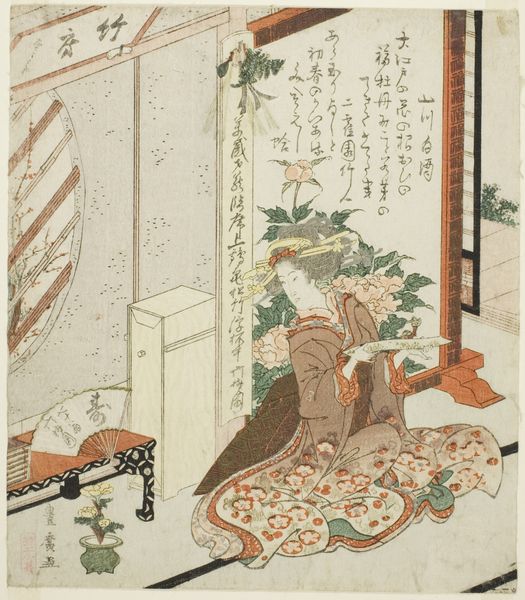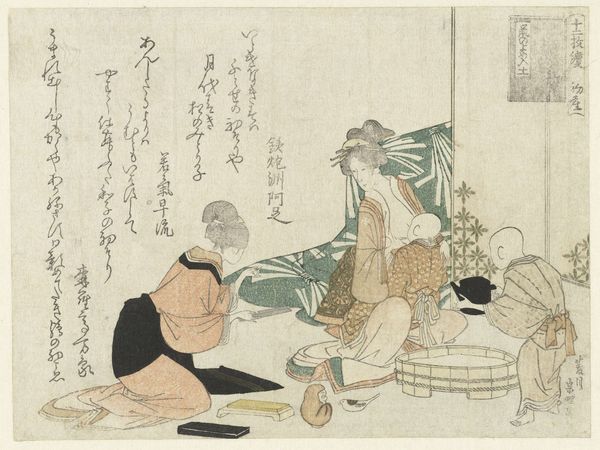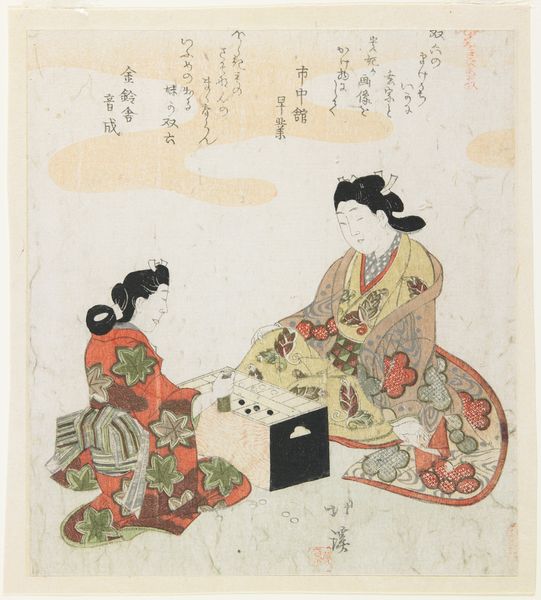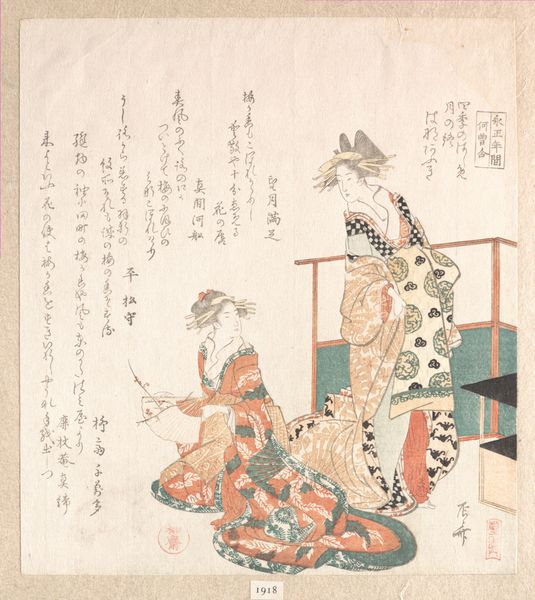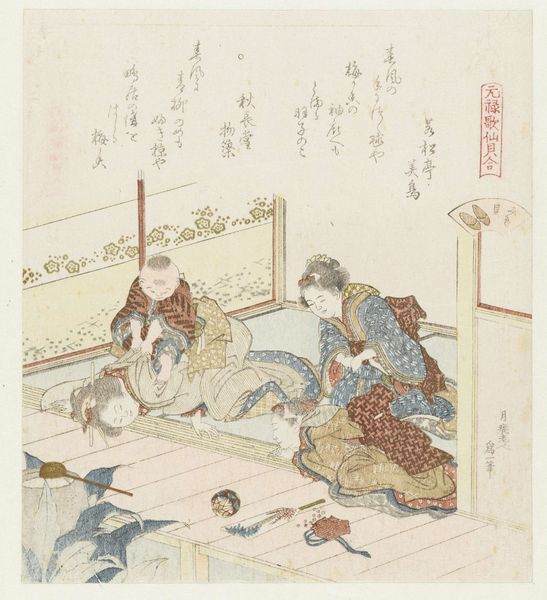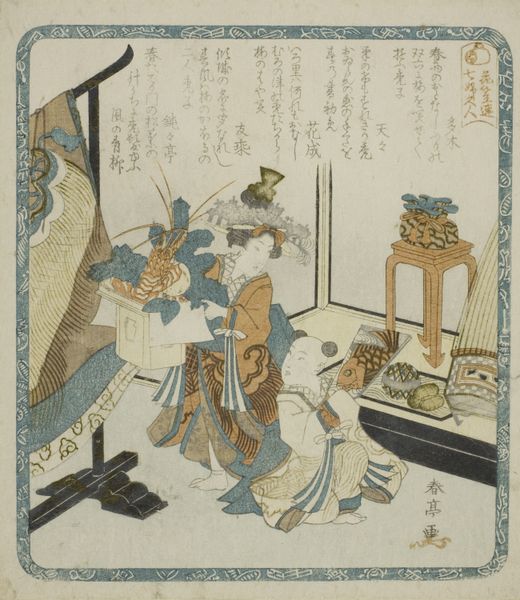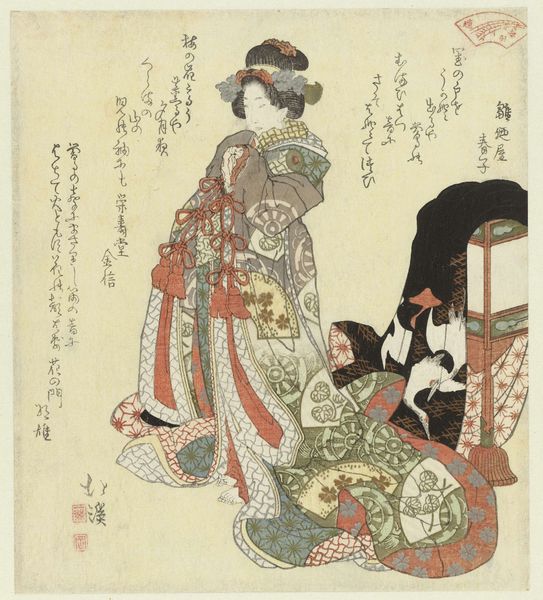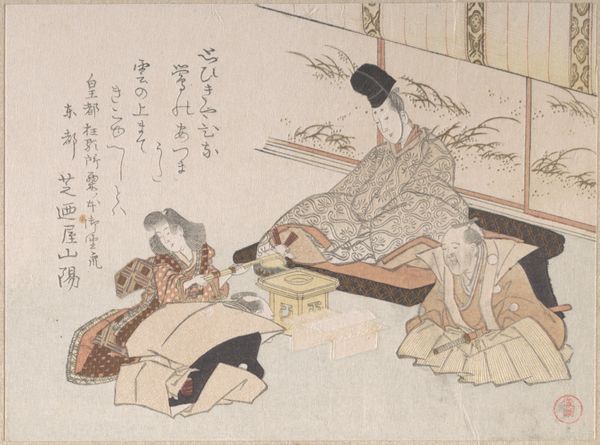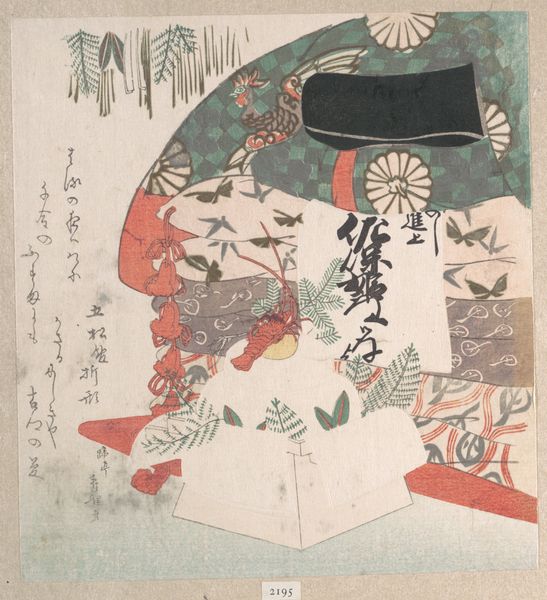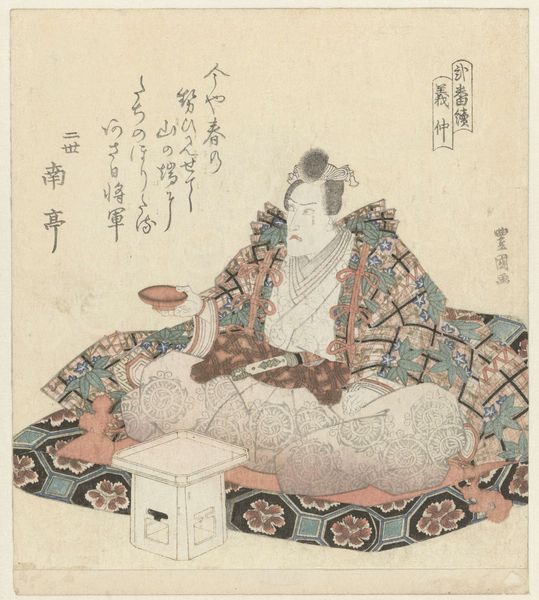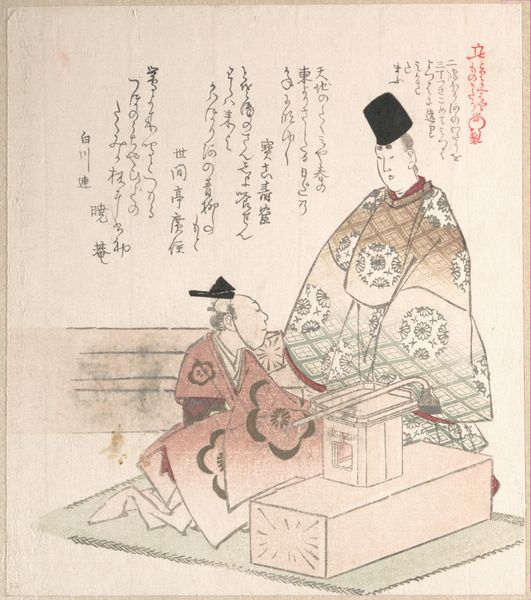
print, ink
# print
#
ukiyo-e
#
japan
#
figuration
#
ink
#
genre-painting
Dimensions: 8 x 7 1/16 in. (20.3 x 17.9 cm) (image, sheet)
Copyright: Public Domain
Curator: This is "Chinese Princess at an Embroidery Table" by Totoya Hokkei, created in 1828. It’s a woodblock print, a beautiful example of ukiyo-e from the Edo period in Japan. Editor: It’s lovely! I'm immediately struck by the contrast. There’s a clear hierarchy here – the elevated status of the princess contrasts with the almost suffocating domestic space, which seems very common in Japanese art. What's your interpretation? Curator: That's a keen observation about hierarchy, and its intersection with her confined setting offers an intriguing entry point. I think this work asks us to consider the artist's relationship to the social and political constraints of the era, in relation to both class and gender. Look at the figure, rendered anonymous in terms of the 'feminine face'. What happens when a signifier of status gets, perhaps intentionally, blurred or loses meaning? Editor: You mean, how her bowed head almost erases her face and unique identity? It seems she is both a 'princess' but still a female within confined settings and role. Is this a challenge or social commentary? Curator: Precisely! We might view her hidden expression, the almost obscured individuality beneath layers of elaborate clothing and imposed roles, as a form of resistance, however subtle, to patriarchal and class-based power structures. Think of it this way: is Hokkei showing us an idealized image, or is he, through the guise of genre painting, commenting on the limitations placed upon women, regardless of their social standing? Consider that too when analyzing other women within Hokkei's ukiyo-e collections! Editor: That’s a powerful way to think about it. I was initially drawn to the surface beauty, but understanding it in a socio-political context definitely deepens my appreciation. Curator: Exactly! The beauty becomes a lens through which we can examine broader social issues and question the dominant narratives of the time.
Comments
No comments
Be the first to comment and join the conversation on the ultimate creative platform.

